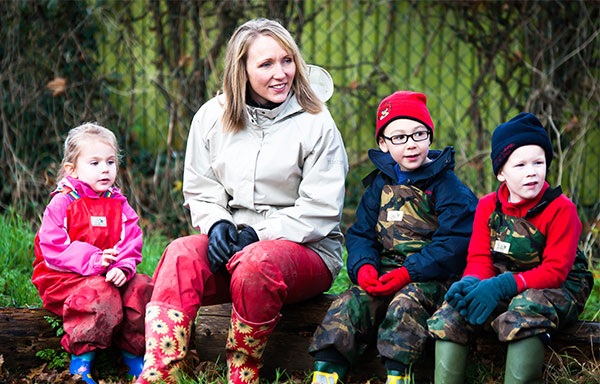Planting the Seeds of Vocabulary

It’s still early days in 2022, but there are beginning to be some early signs of springtime. The very first flowers are beginning to bloom, the days are getting a little longer, and it’s just about time to start planting seeds for the upcoming season. Whether you have a garden, a window box, or some room on your windowsill, it’s time to get excited about growing and nurturing something green!
The act of growing a plant makes me think of how we support a child’s development. I think there is a lot to be found in common. Today, I’d like to draw a comparison with supporting your child’s ever-expanding vocabulary. Bear with me…
1. First, we have to plant the seed. By that I mean, we have to introduce a new word. But the seed won’t stick on its own – we have to place it in the right context. For a seed, that’s a pot of soil. For a new word, we need to introduce the vocabulary in a context that makes sense to support the meaning. Take this example: we want to teach the word ‘branch’. To introduce the word in a meaningful context, we will need to look at a tree and show the branches. This could be a picture or a photo, or on the TV, but the more concrete we can make the word, the better the foundation of our vocabulary will be, so it would be even better to explore the branches on real trees.
2. Once we’ve planted the seed, what happens next? If we ignore it, will it grow? Unless we care for the plant, it will not survive. The roots will not grow, and we will never see anything come up above the soil. It’s the same with new words. If we introduce them once and leave it at that, it is very unlikely that the word will be retained. For the seed to take hold and grow its roots, we need to water it, and for the word to take hold, and grow its own foundations we need to repeat it often. The child will need to hear the word regularly and in context, for it to become established. As the child hears the word more and more, used correctly and in the right context, the roots will grow and the child’s understanding of that word will become more secure.
3. We know that a plant will grow roots before we see shoots and leaves appear above the ground. In the same way, a child will understand a new word before they are able to use it for themselves. We need to be patient as the child’s understanding develops before we can expect them to begin to use the word correctly themselves in their spoken language.
4. It may be enough to water the plant regularly, but if we really want it to thrive, we should fertilize it from time to time. For new words, this means that in addition to using that word regularly, we can go a bit further to make sure that the child’s knowledge about that word is really deep. It’s helpful to continue to revisit explicit teaching of the word, and this can be done in a number of ways. We can make time to practice using that new vocabulary in a structured activity. We can make links with other related words. We can make sure to talk about the multiple meanings or uses that word might have in different contexts. All of these things will help your child’s vocabulary flourish.
5. What would happen if we planted too many seeds in our pot at one time? As the plants grow, they might all be less successful. They might crowd each other out, and some seedlings will die off. It’s the same with words. If we introduce too many new items of vocabulary in one go, it may be hard for the child to learn each word well. Better to focus on growing vocabulary a little at a time.
6. Just like plants, new words will eventually become established, and they won’t need as much care or attention. The important thing to remember is that this takes time, and we shouldn’t try to rush it. Try to gradually taper your support as your child successfully learns words.
Why not focus on growing new vocabulary this spring, and see the results for yourself?